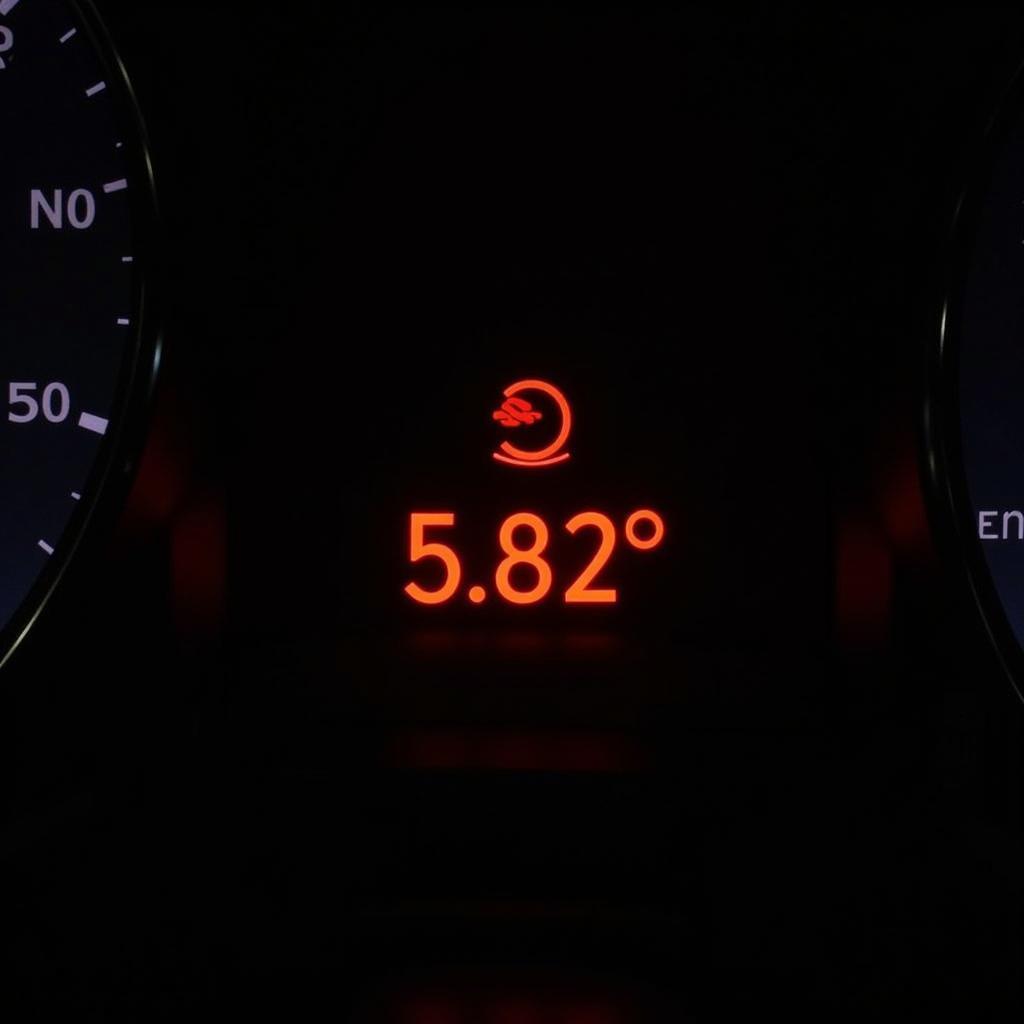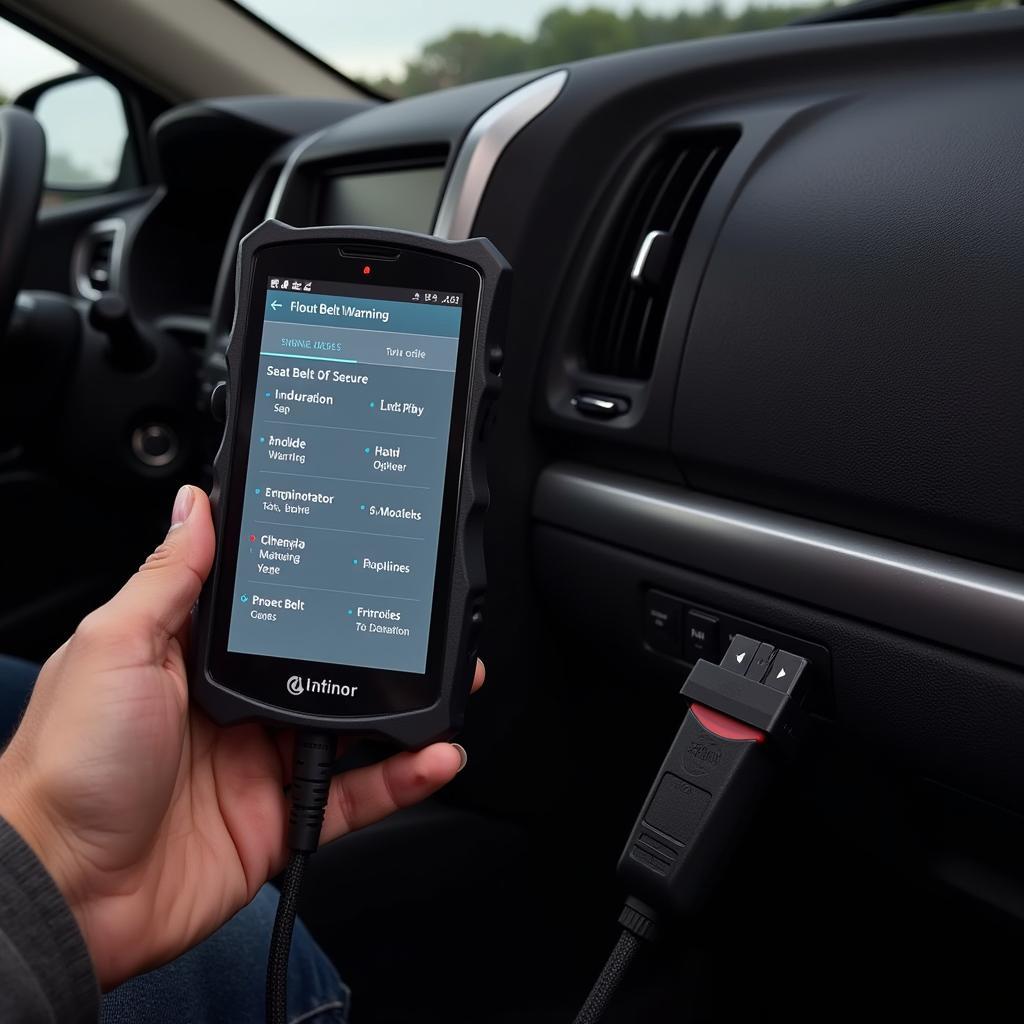The 2005 GMC Yukon is a popular SUV known for its spacious interior and capable engine, but like any vehicle, it can experience issues. One common issue that Yukon owners may encounter is the brake system warning light illuminating on the dashboard. This light indicates a potential problem with the braking system, which should be addressed immediately to ensure your safety and the safety of others on the road.
This article will guide you through the common causes of the brake system warning light on a 2005 GMC Yukon, how to diagnose the issue, and potential solutions. We will also discuss the importance of addressing this warning light promptly to prevent further damage and ensure proper brake function.
Understanding the Brake System Warning Light
The brake system warning light is an essential safety feature that alerts the driver to potential problems with the braking system. When this light illuminates, it means that the system has detected a malfunction, and it is crucial to investigate the cause.
The warning light can be triggered by a wide range of issues, including:
- Low brake fluid: The most common reason for the brake system warning light is low brake fluid. When brake fluid levels drop, it can affect the braking performance and even lead to brake failure.
- Faulty brake sensors: Brake sensors play a crucial role in monitoring brake pad wear and fluid levels. If a sensor malfunctions, it can trigger the warning light even if there is no actual problem with the brakes.
- Electrical problems: Electrical issues, such as a faulty wiring harness or a short circuit, can also trigger the brake system warning light.
- Faulty brake caliper: A faulty brake caliper can cause the brake pads to stick, leading to excessive heat and brake failure.
- Faulty master cylinder: The master cylinder is responsible for distributing brake fluid to the wheels. If it fails, the brakes will not function properly.
- Faulty brake booster: The brake booster helps amplify the driver’s pedal pressure, making braking easier. If it fails, it will take more effort to stop the vehicle.
- ABS problems: The anti-lock braking system (ABS) helps prevent wheel lock-up during braking. If the ABS system malfunctions, the warning light may illuminate.
How to Diagnose the Brake System Warning Light
Diagnosing the cause of the brake system warning light on a 2005 GMC Yukon requires a systematic approach to isolate the problem. Here’s a step-by-step guide:
- Check the brake fluid level: Begin by checking the brake fluid level in the master cylinder reservoir. The fluid should be clean and full, without any signs of contamination.
- Inspect the brake pads and rotors: Visually inspect the brake pads and rotors for wear and tear. Replace worn or damaged pads and rotors as needed.
- Check the brake sensors: Inspect the brake pad wear sensors and fluid level sensors for damage or malfunction.
- Scan for codes: Use an OBD2 scanner to retrieve any stored error codes that may indicate the source of the problem.
- Inspect the brake lines and hoses: Check the brake lines and hoses for leaks, cracks, or damage.
- Inspect the brake calipers and master cylinder: Visually inspect the brake calipers and master cylinder for leaks or damage.
- Test the brake booster: Test the brake booster by pressing the brake pedal firmly. If it feels spongy or unresponsive, the booster may need to be replaced.
Solutions for the Brake System Warning Light
Once you have diagnosed the cause of the brake system warning light, you can take the appropriate steps to fix the problem. Here are some common solutions:
- Replenish brake fluid: If the brake fluid is low, simply top it off using the correct type of brake fluid for your Yukon. Consult your owner’s manual for the specific type recommended for your vehicle.
- Replace brake pads or rotors: If the brake pads or rotors are worn or damaged, they need to be replaced. This should be done by a qualified mechanic to ensure that the new parts are installed correctly.
- Repair or replace faulty sensors: If the brake sensors are faulty, they need to be repaired or replaced. This will ensure that the warning light is not triggered unnecessarily.
- Repair or replace faulty electrical components: If the electrical components are faulty, they need to be repaired or replaced. This may involve replacing wiring harnesses, connectors, or other electrical components.
- Repair or replace faulty brake calipers, master cylinder, or brake booster: If any of these components are faulty, they need to be repaired or replaced. This is a complex repair that should be performed by a qualified mechanic.
Expert Tip: It’s always recommended to have your vehicle inspected by a qualified mechanic if the brake system warning light illuminates. They can diagnose the problem accurately and recommend the best course of action.
Importance of Addressing the Brake System Warning Light Promptly
Ignoring the brake system warning light can lead to serious consequences. Here’s why it’s crucial to address this issue promptly:
- Reduced braking performance: Low brake fluid or other brake system issues can reduce braking performance, increasing the stopping distance and making it harder to control the vehicle.
- Brake failure: In severe cases, neglecting a brake system issue can lead to complete brake failure. This can result in a dangerous situation and could even lead to an accident.
- Increased repair costs: Delaying repairs can cause further damage to the braking system, leading to more expensive repairs in the long run.
Frequently Asked Questions (FAQs)
Q: What does the brake system warning light look like?
A: The brake system warning light typically looks like a circle with an exclamation mark inside. It may be accompanied by a brake symbol or the word “BRAKE” in the instrument cluster.
Q: Is it safe to drive with the brake system warning light illuminated?
A: It is not safe to drive with the brake system warning light illuminated. This indicates a problem with the braking system that needs to be addressed immediately.
Q: Can I drive my GMC Yukon to the mechanic if the brake system warning light is illuminated?
A: It is generally not recommended to drive your vehicle with the brake system warning light illuminated, especially for long distances. If the brake system is compromised, it could lead to a dangerous situation. If you must drive a short distance, do so cautiously and at low speeds.
Q: Can I reset the brake system warning light myself?
A: In some cases, you may be able to reset the warning light by topping off the brake fluid or by replacing faulty sensors. However, if the warning light persists, it’s best to have your vehicle inspected by a qualified mechanic.
Q: How often should I have my brakes inspected?
A: It’s generally recommended to have your brakes inspected every 6 months or 6,000 miles, whichever comes first. This will help ensure that your brakes are in good working order and that any potential problems are caught early.
Q: What is the cost of brake system repairs?
A: The cost of brake system repairs can vary depending on the severity of the problem and the parts that need to be replaced. However, you should expect to pay between $100 and $500 for basic brake repairs, such as replacing brake pads or rotors. More complex repairs, such as replacing the master cylinder or brake booster, can cost significantly more.
Conclusion
The brake system warning light on a 2005 GMC Yukon is a serious indicator of a potential problem with the braking system. Addressing this issue promptly is crucial for maintaining the safety and functionality of your vehicle. By understanding the common causes of the warning light, following the diagnostic steps, and implementing the appropriate solutions, you can keep your 2005 GMC Yukon running smoothly and safely. Remember, if you are unsure about any aspect of brake system maintenance, it’s always best to consult a qualified mechanic.


